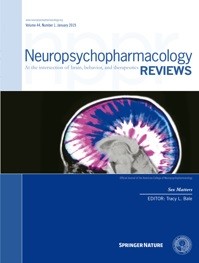 “To determine if cannabis may be used as an alternative or adjunct treatment for intermittent and chronic prescription opioid users.
“To determine if cannabis may be used as an alternative or adjunct treatment for intermittent and chronic prescription opioid users.
Design: Retrospective cohort study.
Setting: A single-center cannabis medical practice site in California.
Patients: A total of 180 patients who had a chief complaint of low back pain were identified (International Classification of Diseases, 10th Revision, code M54.5). Sixty-one patients who used prescription opioids were analyzed.
Interventions: Cannabis recommendations were provided to patients as a way to mitigate their low back pain.
Outcome Measures: Number of patients who stopped opioids and change in morphine equivalents.
Results: There were no between-group differences based on demographic, experiential, or attitudinal variables. We found that 50.8% were able to stop all opioid usage, which took a median of 6.4 years (IQR=1.75–11 years) after excluding two patients who transitioned off opioids by utilizing opioid agonists. For those 29 patients (47.5%) who did not stop opioids, 9 (31%) were able to reduce opioid use, 3 (10%) held the same baseline, and 17 (59%) increased their usage. Forty-eight percent of patients subjectively felt like cannabis helped them mitigate their opioid intake but this sentiment did not predict who actually stopped opioid usage. There were no variables that predicted who stopped opioids, except that those who used higher doses of cannabis were more likely to stop, which suggests that some patients might be able to stop opioids by using cannabis, particularly those who are dosed at higher levels.
Conclusions: In this long-term observational study, cannabis use worked as an alternative to prescription opioids in just over half of patients with low back pain and as an adjunct to diminish use in some chronic opioid users.”


 “Neurofibromatosis type 1 (NF1) is a common genetic disorder. Pain is a major symptom of this disease which can be secondary to the development of plexiform and subcutaneous neurofibromas, musculoskeletal symptoms (such as scoliosis and pseudoarthrosis), and headaches. Visible neurofibromas add significant psychosocial distress for NF1 patients. Along with the chronic pain, psychosocial distress contributes to associated mood disorders, such as depression and anxiety.
“Neurofibromatosis type 1 (NF1) is a common genetic disorder. Pain is a major symptom of this disease which can be secondary to the development of plexiform and subcutaneous neurofibromas, musculoskeletal symptoms (such as scoliosis and pseudoarthrosis), and headaches. Visible neurofibromas add significant psychosocial distress for NF1 patients. Along with the chronic pain, psychosocial distress contributes to associated mood disorders, such as depression and anxiety.
 “While recent research has shown that
“While recent research has shown that  “Pain is a common and complex symptom of cancer having physical, social, spiritual and psychological aspects. Approximately 70%-80% of cancer patients experiences pain, as reported in India.
“Pain is a common and complex symptom of cancer having physical, social, spiritual and psychological aspects. Approximately 70%-80% of cancer patients experiences pain, as reported in India.
 “Chronic pain affects a significant percentage of the United States population, and available pain medications like opioids have drawbacks that make long-term use untenable.
“Chronic pain affects a significant percentage of the United States population, and available pain medications like opioids have drawbacks that make long-term use untenable. “Peripheral neuropathy can significantly impact the quality of life for those who are affected, as therapies from the current treatment algorithm often fail to deliver adequate symptom relief. There has, however, been an increasing body of evidence for the use of cannabinoids in the treatment of chronic, noncancer pain. The efficacy of a topically delivered
“Peripheral neuropathy can significantly impact the quality of life for those who are affected, as therapies from the current treatment algorithm often fail to deliver adequate symptom relief. There has, however, been an increasing body of evidence for the use of cannabinoids in the treatment of chronic, noncancer pain. The efficacy of a topically delivered  “Transcutaneous electrical nerve stimulation (TENS) promotes antinociception by activating the descending pain modulation pathway and consequently releasing endogenous analgesic substances.
“Transcutaneous electrical nerve stimulation (TENS) promotes antinociception by activating the descending pain modulation pathway and consequently releasing endogenous analgesic substances.